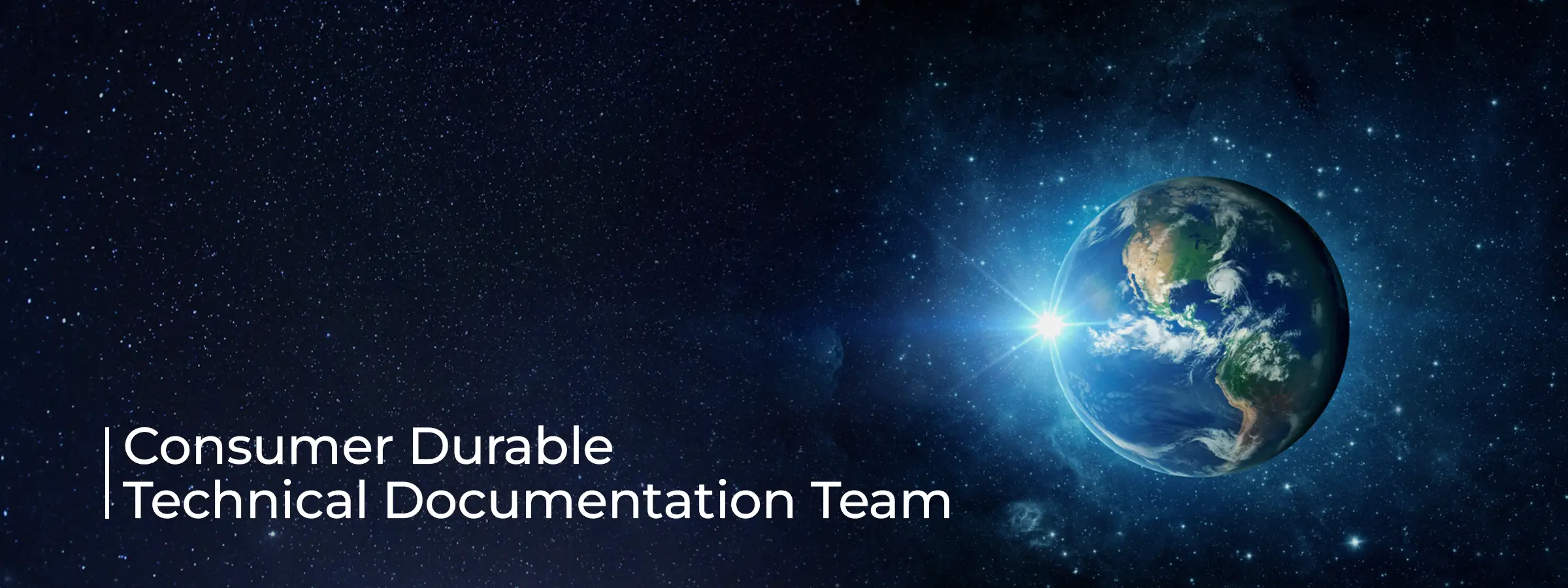
In the consumer durable company, the documentation team faces challenges in effectively translating product manuals, guides, and instructional materials for diverse markets. These challenges hinder the company's ability to provide comprehensive support and instruction to non-English-speaking customers.
Despite the importance of providing product documentation in multiple languages to cater to the global customer base, most organization’s translation processes are inefficient and prone to errors, leading to delays in product launches, customer dissatisfaction, and increased support costs.
• Language Diversity: The consumer base spans various regions, each with its own language requirements. Ensuring accurate and effective translation of product documentation into multiple languages is crucial to cater to these diverse markets.
• Language Barrier: The documentation team struggles to bridge the language gap between the company's primary language and the languages spoken by its target markets. This leads to incomplete or inaccurate translations, resulting in customer confusion and dissatisfaction.
• Quality Assurance: Maintaining consistent quality across translations is challenging. Inconsistencies or inaccuracies in translated documentation can lead to misunderstandings, customer dissatisfaction, and even safety concerns.
• Timeliness: Delays in translating documentation can hinder product launches, customer support, and overall market penetration. Timely translation is essential to ensure that all customers have access to up-to-date and relevant product information.
• Cost Efficiency: Translation services can be costly, especially when dealing with numerous languages and large volumes of documentation. Finding cost-effective solutions without compromising on quality is imperative for efficient operations.
• Integration with Product Development: Seamless integration of translation processes with product development is essential to ensure that translated documentation aligns with product updates, new features, and regulatory changes.
• Localization Challenges: Beyond translation, ensuring cultural sensitivity and localization of content is crucial for effectively communicating with diverse audiences and adhering to local regulations and norms.
• Cultural Adaptation: Simply translating content word-for-word may not suffice, as it may fail to account for cultural nuances, preferences, and conventions. The team lacks processes for culturally adapting content to resonate with the local audience, impacting the effectiveness of the documentation.
• Consistency: Inconsistent translation quality across different documents and languages diminishes the company's brand reputation and erodes customer trust. The lack of standardized translation guidelines and quality assurance measures contributes to this issue.
• Technical Challenges: Translating technical terms and instructions accurately poses a significant challenge, particularly when dealing with complex product specifications and features. The team lacks specialized expertise in technical translation, leading to errors and misinterpretations.
• Regulatory Compliance: Failure to accurately translate regulatory and safety information can expose the company to legal risks and liabilities in international markets. The documentation team lacks a systematic approach to ensure compliance with local regulations and standards.
• Inefficient Translation Workflow: Our current translation workflow lacks a streamlined process, resulting in delays and inconsistencies in translated content. Translators often work in isolation, without proper collaboration tools or guidelines, leading to redundant efforts and inconsistencies across different language versions.
• Quality Control and Accuracy: Ensuring the accuracy and quality of translated content is crucial for maintaining customer trust and satisfaction. However, our existing quality control measures are insufficient, resulting in errors, mistranslations, and inconsistencies that can confuse and frustrate customers.
• Scalability and Resource Allocation: As our company expands into new markets and introduces new products, the demand for translated documentation is increasing. However, our current resources and infrastructure may not be adequate to handle this growing workload efficiently. This can lead to bottlenecks, missed deadlines, and subpar translations.
To address these challenges, the technical documentation team should partner with localization experts to address cultural and linguistic nuances in translated content to tailor documentation to the specific needs and preferences of target audiences in different regions. The LSP offering service should be based on:
• Automated Translation Tools: Integration of advanced translation software and tools to streamline the translation process, improve efficiency, and reduce manual errors.
• Quality Control Mechanisms: Implement robust quality assurance measures such as peer review, linguistic validation, and feedback loops to ensure the accuracy and consistency of translated content.
• Collaborative Workflow: Establishing a collaborative workflow between the documentation team, translators, and other stakeholders to facilitate communication, coordination, and timely delivery of translations.
• Centralized Translation Memory: Utilization of a centralized translation memory system to store and reuse previously translated content, ensuring consistency and reducing translation redundancy.
• Cultural Sensitivity Training: Providing training and resources to translators and documentation team members on cultural nuances, local customs, and preferences to enhance content localization.
• Continuous Improvement: Regular evaluation and optimization of translation processes based on feedback, performance metrics, and industry best practices to drive continuous improvement.
• Develop comprehensive style guides and glossaries to ensure consistency in terminology and writing style across all translated content. Implement rigorous quality assurance processes, including peer reviews and proofreading, to maintain the accuracy and integrity of translated documentation.
Addressing these challenges is critical for the documentation team to enhance the company's global market presence, improve customer satisfaction, and uphold brand integrity. A comprehensive strategy encompassing efficient translation processes, cultural adaptation, quality assurance measures, and cost-effective solutions is essential to overcome these obstacles and drive success in international markets.
By implementing these strategies, the documentation team can overcome translation challenges and ensure that their product documentation effectively caters to the diverse needs of their global consumer base.
© 2024 WHITE GLOBE GROUP PVT LTD